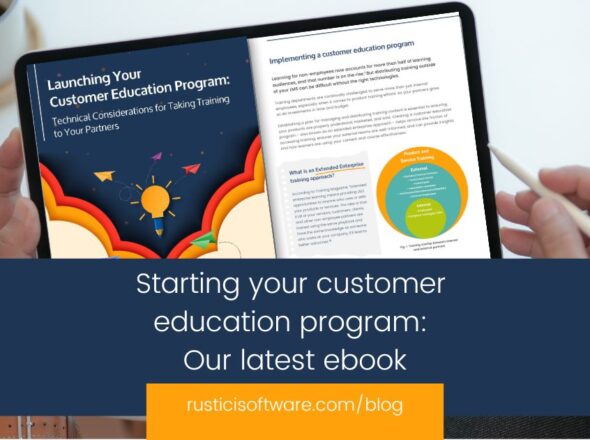Whether you create and sell eLearning content as your core business or you provide training as part of a larger product offering, you likely spend a good deal of time and energy administering eLearning content. From ensuring each client has the latest version of a course to manually enforcing licenses, the traditional eLearning content distribution process can be extremely burdensome.
As a result, you probably carry around a number of frustrations around your current management process. You know the pain associated with a loss of revenue because you can’t turn off a client’s access to training. You spend hours wishing you could uncover how many learners are using your content. You manually send new versions of a course to each client who uses it and ask them to update it in their LMSs.
We’ve seen these grievances first-hand. Our customer the SANS Institute found that revenues could increase annually by an estimated 20% if clients were charged accurately for learners.
Your current approach distributing eLearning content
Since most of your courses must be SCORM compliant, you likely see no option but to directly provide your clients with proprietary training files. We would guess your current distribution process looks something like this:
- You create your eLearning content, likely in a few different standards (SCORM, xAPI, cmi5, LTI or AICC) to account for your different customers’ needs.
- If applicable, you establish licensing or usage terms with your customers, accounting for details like how many users can access the content or how long your customer can take your course.
- You distribute training courses to your customer, which they play and track in their own LMS or eLearning platform.
- You manage the administrative process directly with your client. If you release a new version a course, you send the new version to your client and ask them to update it in their LMS.
- If applicable, you check in with your client to manage their license, asking them if their user count has increased, requesting them to stop using content after a license expired or chasing them for payment because they continue to use content after a license expired.
- Your client manually updates new versions of courses within their LMS and must ensure their learners are accessing the correct version.
- You receive no insight into course usage data, all of which only resides in your customers’ LMSs.
Perfect your eLearning content distribution strategy
Thankfully, there is a better way to manage your eLearning content distribution approach. Centrally hosting your content and delivering courses to customers as proxy files can ensure your courses are easier to release, manage and understand. A new formula for success could look like this:
- You create training in the format that best suits you, whether complaint to an eLearning standard like SCORM or as proprietary content that sits on your servers.
- You upload content into one central location, which automatically serves that content to your customers’ learning platforms.
- When you update the version of your content, your customers and learners can immediately play the latest version of your training. Your customers do not upload any new files into their learning platform/LMS when this new version is released.
- If applicable, you restrict access automatically when license terms are met, such as learner count or expiration date, or manually cut off access for non-payment. This allows you to build and protect a recurring revenue stream and waste less time managing contracts.
- You receive and protect insight into course usage across LMSs and are able to make more informed business decisions as a result of your insights.
Results from updating eLearning distribution
Our customer the SANS Institute has had great success updating their eLearning distribution approach. Using our product Content Controller, they’ve seen:
- A 90% reduction in time spent existing content.
- $100,000 savings in employee costs per year from more effectively distributing content.
- A significant increase in revenues by ensuring customers pay for the right number of learners.
- Deployment of 28 languages as a single course.
- Support of 70 LMSs across 600 customers.
The good news is that there are a variety of ways you can improve your eLearning distribution approach to see results like these. Ready to talk and learn more? Reach out! Want to keep reading? Learn more about how to centrally host and maintain your eLearning content.


